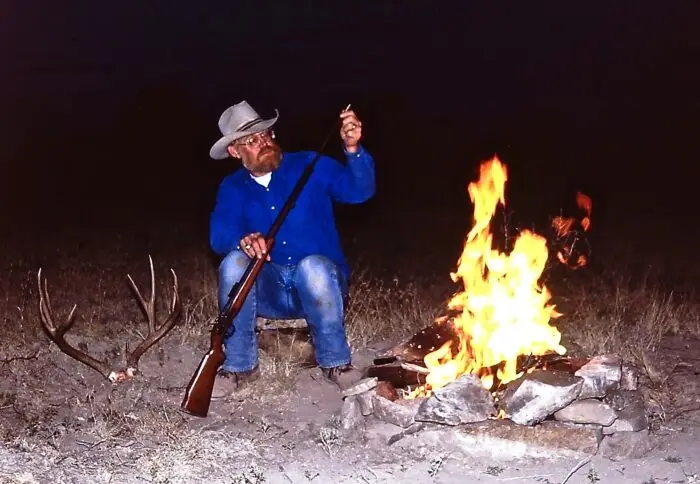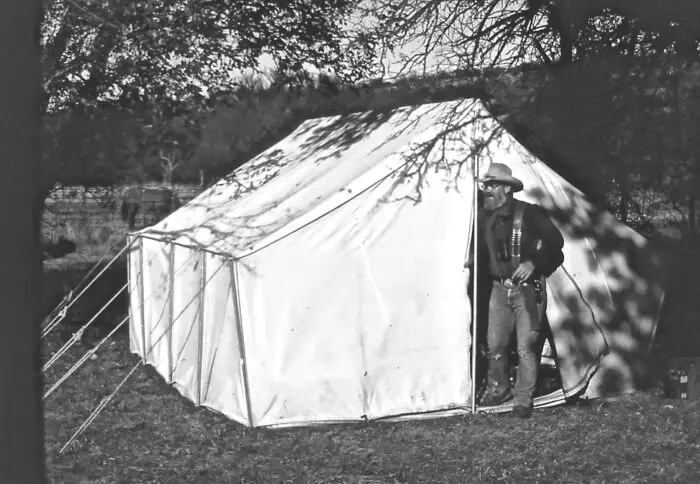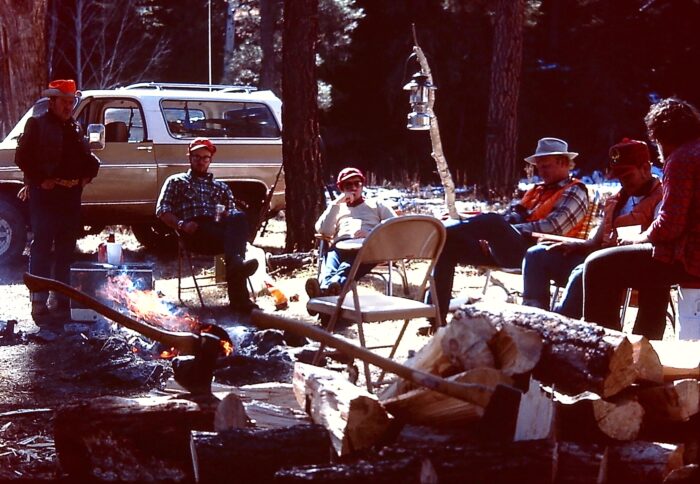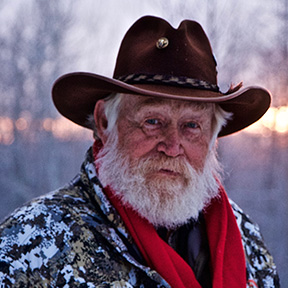Hunting Camp
As a youngster growing up in rural Texas, just above the Gulf Coast Prairie, hunting and camping played an important role in my early life. My first “camp” was my Dad’s dog trailer. I spread hay on the floor and laid a homemade quilt on top of it. To keep warm, I used a “feather bed,” kind of a “comforter,” made from duck and goose down from domestic and wild ducks and geese.
In time, my parents built a camp house on the backside of our property under an ancient oak that had likely lived through at least three hundred summers. I could not help but wonder if perhaps Indians and earlier European settlers had camped under the same tree many years before.
Our camp house was a one-room, uninsulated 2×4 wood frame covered with tin. While “in camp,” my mother cooked meals on an old cast-iron wood stove that had belonged to my great-grandparents.
Some of my fondest memories of growing up were those spent “in camp” during the fall whitetail deer hunting season. We moved to camp the week before the deer season opened, “we” being my parents, younger brother Glenn and me. Arriving a week early gave me time to do some last-minute scouting and make certain our deer stands were still sound, and shooting lanes were cleared. We still, however, had to take care of the livestock we had at home. Back then, we were in the chicken, hog, and cattle business, all required daily care.
A big part of our “camp” was the food. Meals prepared on the woodstove always tasted better than those prepared back home, even if they were cooked and fried in the same cast-iron pots and pans. We used lard, rendered from the hogs we butchered each year, to fry our food.
For several years, our hunting camp played an important part in our lives. Unfortunately, in time, “life” got in the way. Today, it is merely an old building, filled with memories, that exists on my property.
Part of “life” had me becoming a wildlife biologist and an outdoor communicator who has been fortunate and blessed to visit a pretty fair number of hunting camps throughout the world. All have been truly memorable, some more so than others.
Back during my early days as a wildlife biologist living in Abilene, Texas I hunted with Roy Bamberg and Chuck Dalchau, fish biologists with the Texas Parks and Wildlife Department. At the time I worked for the TPWD’s Wildlife Division. Each fall, we and often other friends hauled an old Army Command tent to New Mexico’s mountains to hunt mule deer.
Our cots lined the walls, knowing that Dalchau would soon have a fire going in the wood stove that would turn it cherry red. Bamberg usually appointed himself camp cook and prepared unbelievably delicious meals. These were followed by sitting outside if the weather permitted or inside if not. After a hard day’s hunt, hunger satiated, plied by a bit of “safe water,” the stories would begin—tales of past hunts, of great stags bested, but also tales of being bested.
We generally took deer on our annual hunting trips. While doing so was important, perhaps equally, if not more important, was the time we spent together in camp.
As my career in writing and outdoor television progressed, there have been numerous hunting camps in such places as Africa, Canada, Alaska, and elsewhere. Sometimes, my “up North” camps meant “living” in tents barely big enough for my sleeping bag and me, occasionally being secluded there for several days when inclement weather set in. On the north side of Alaska’s Brook Range, I slept in a wall tent surrounded by moose and caribou quarters hanging from meat poles. Each night, the heavy-laden meat poles were visited by a sow grizzly and her two grown cubs to feed on moose and caribou. Trees in the area were barely tall enough to hang quarters just off the ground. There was not much to be done to keep the grizzlies from feeding the quarters hung there. My hope was they preferred “tender dead meat” to “tough live me.” I slept with a loaded .375 H&H Mag at my side and a single-shot .45-70 handgun in my hand.
Hunting camps in Africa were always “interesting,” some more so than others. In a camp in Zimbabwe on the Save Conservancy, lions roared just outside my tent and nightly rubbed on its walls. There, too, I slept with a fully loaded .375 Ruger at my side. A couple of years before that hunt in what is now called the Zambezi Strip, formerly the Caprivi Strip, in northeastern Namibia, elephants fed nightly on tender leaves practically above our “sleeping tent.” There, I also slept with a .375 Ruger fully loaded with Hornady’s 300-grain Dangerous Game Expandable (DGX) and Dangerous Game Solids (DGS).
While hunting greater kudu in central Namibia, the tent I slept in was, during the day, “home” to a brown cobra. As I was to learn later, it slithered into my tent about 8 a.m., after I had gone hunting. After sleeping there for a few hours, it left around 3 o’clock in the afternoon before I returned.
It was not until the cobra’s rest was disturbed by the woman leaving freshly laundered clothes in my tent that efforts were made to rid my nighttime abode of that daytime border. The day after the snake had been extricated, I was told of my daily visitor.
The camp manager knew about the snakes coming and going, evidenced by the trail it left on the sandy ground around my tent, which was daily swept with a broom so the comings and goings of “things” could be determined.
Hunting the Brush Country of South Texas, I often camped in old bunkhouses and homes. Rattlesnakes in the region were quite common. When fall temperatures turn cool, rattlesnakes head to their winter dens. Snakes gather where they will be protected from cooler to cold temperatures. It was common for rattlesnakes to den under the floors of ranch buildings we used as our “hunting camps.”
I recall spending nights in South Texas camps where, when all was quiet for the night, we could hear the slight rattles of snakes as they crawled around under the cabin floor. I can assure you we made certain there were no mouse or rat holes that gave snakes access to the areas we occupied. But we also made certain every time we put on boots or crawled into or got out of bed, there were no unwelcome “visitors.”
In setting up camps where snakes and other pests exist, I often employ a few things I learned from my grandparents and from hunting camps in Africa. We clear all vegetation and debris near and around buildings or tents we plan to occupy. Next, we scatter sand on a 6-feet diameter around the building or tent, which can be swept clean daily. Any snake crawling into the tent or building leaves an obvious trail.
I was in Webb County, Texas, just outside of Laredo, not far from the Rio Grande. A few years ago, I planned to establish camp in an old bunkhouse. Thus, I cleaned the grounds next to the building, hauled in sand as I had done before, and swept it clean before heading home.
While I was gone, the first cold spell of the year blew through the area. When I got to “camp,” where I intended to spend the next several days, I immediately noticed what seemed like hundreds of snake trails traversing the sand to get under the old building. Needless to say, I quickly changed my mind about where I would be sleeping for the next several nights.
“Interesting” camps! Thankfully, not all the hunting camps I’ve stayed in were fraught with “adventures.” Most of the camps have been safe, comfortable, enjoyable, and great fun! I would not trade anything for my time in hunting camps. Maybe I should add that all the hunting camps I have been blessed to spend time in were also “educational” because of all the great stories and friendships developed. Adventuresome or not, I can hardly wait to get back to camp! I dearly love hunting camps…
The DSC Convention and Outdoor Expo, which will be held in January 2024 in Atlanta, Georgia, is a great place to plan your next hunting camp adventure. For more information, please visit biggame.org.
Professional wildlife biologist/outdoor communicator, Larry Weishuhn, known to many as “Mr. Whitetail”, has established quality wildlife management programs on over 12,000,000 acres throughout North American and other parts of the world. He has hunted big game with rifle and/or handgun on six continents. Larry is a Professional Member of the Boone & Crockett Club, life-member of numerous wildlife conservation organizations including the Dallas Safari Club, Mule Deer Foundation, and Wild Sheep Foundation. He currently serves on the DSC Foundation Board of Directors, is one of three co-founders of the Texas Wildlife Association; is a member of the Legends of the Outdoors Hall of Fame and the Muy Grande Hall of Fame; he too, received the Zeiss Lifetime Achievement Award among many other honors.





